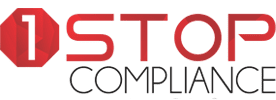
Are You Holding the Required Annual Safety Trainings?
Part of every organization’s best practices is annual safety training, not only a best practice but many of them are required by OSHA standards. While not all are required a handful of them are, and we have a list to help you find out which ones those are.
- Employee Access to Medical Records
- Annual notification for employee access to medical records is required. As a company you’re required to inform workers of their rights to access their medical records, where they’re kept, how to obtain them and who is responsible for keeping them.
- Respiratory Protection and Fit-Testing
- Employees wearing respirators or participating in your company’s respiratory protection program are required to receive annual training regarding respirator use, care, inspection, maintenance, limitations and other requirements.
- Hearing Protection
- If your employees are exposed to noise at or above an 8-hour time weighted average of 85 decibels, your company is required to have a hearing conservation program.
- HAZWOPER
- There are various levels of HAZWOPER. Those with 24 and 40 hour initial training are required to have 8 hours of training annually per year.
- Bloodborne Pathogens
- Anyone who could have bloodborne pathogen exposure is required to have annual training and additional training whenever procedures and tasks are changed.
- Fire Extinguishers and Fire Brigades
- If your company houses an internal fire brigade that fight fires beyond the incipient stage, all fire brigade members are to be provided with annual training. Any members who are required to conduct internal structural firefighting are to have quarterly educational sessions or training as well.
- Asbestos and Other Chemical and Substance-Specific Training
- Employees with potential exposures to OSHA 1910.1003’s 13 carcinogens, vinyl chloride, polyvinyl chloride, inorganic arsenic, lead, cadmium, benzene, coke oven emissions, cotton dust, acrylonitrile (vinyl cyanide), ethylene oxide, formaldehyde, Methylenedianiline and 1, 3-Butadiene are required to have annual safe usage training.
Other Topics to Cover:
Mechanical Power Presses – Operators of mechanical power presses with the Presence Sensing Device Initiation (PSDI) mode on them are required to have annual operator training.
Agriculture Industry – In grain handling facilities annual training is required for workers at grain handling facilities. Topics to be covered include:
- Dust hazards
- Dust accumulation
- Ignition control and prevention
- Cleaning/clearing/housekeeping procedures
- Hot work procedures
- Preventative maintenance
- Lockout/tagout
- Bin entry
- Engulfment hazards (for those entering bins).
For other agriculture-related workplaces where employees are required to use tractors, annual training regarding rollover protective structures is required and those using farm field equipment, farmstead equipment and cotton gins are required to have safe operating and guarding training annually.
Logging Industry – Supervisors and employees in logging industry operation are required to have annual CPR training, with first aid training every 3 years.
Forklift Recertification – Because of their prevalence in industry, we thought we’d also mention that forklift recertifications are due every 3 years as is refresher training for Process Safety Management.
Lockout/Tagout – Not necessarily a training requirement, but an annual requirement nonetheless, employers are required to review their energy control procedures at least annually to ensure the procedure and the requirements of the lockout/tagout standard is being followed.
Need help with getting safety training or safety programs written? Contact 1 Stop Compliance today to start the process and talk to one of our staff members to start.

Updated protecting unvaccinated and other at-risk workers from the coronavirus guidance
The U.S. Department of Labor’s Occupational Safety and Health Administration today issued updated guidance to help employers protect workers from the coronavirus. The updated guidance reflects developments in science and data, including the Centers for Disease Control and Prevention’s updated COVID-19 guidance issued July 27.
The updated guidance expands information on appropriate measures for protecting workers in higher-risk workplaces with mixed-vaccination status workers, particularly for industries such as manufacturing; meat, seafood and poultry processing; high volume retail and grocery; and agricultural processing, where there is often prolonged close contact with other workers and/or non-workers.
OSHA’s latest guidance:
- Recommends that fully vaccinated workers in areas of substantial or high community transmission wear masks in order to protect unvaccinated workers;
- Recommends that fully vaccinated workers who have close contacts with people with coronavirus wear masks for up to 14 days unless they have a negative coronavirus test at least 3-5 days after such contact;
- Clarifies recommendations to protect unvaccinated workers and other at-risk workers in manufacturing, meat and poultry processing, seafood processing and agricultural processing; and
- Links to the latest guidance on K-12 schools and CDC statements on public transit.
As part of the agency’s ongoing commitment to review the COVID-19 Healthcare Emergency Temporary Standard every 30-days, OSHA also said that the safeguards set forth by the standard remain more important than ever. After reviewing the latest guidance, science and data, and consulting with the CDC and partners, OSHA has determined the requirements of the healthcare ETS remain necessary to address the grave danger of the coronavirus in healthcare. OSHA will continue to monitor and assess the need for changes in the healthcare ETS each month.
